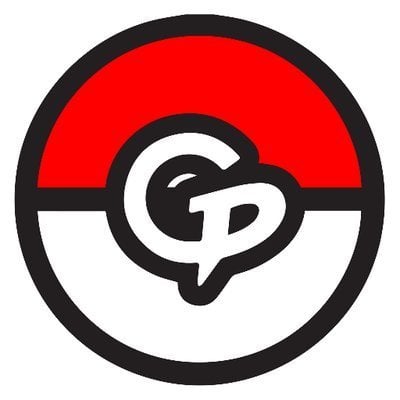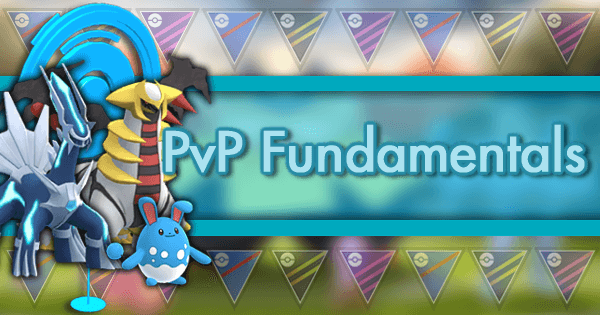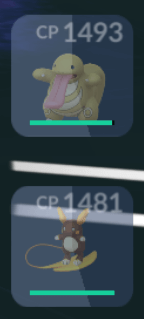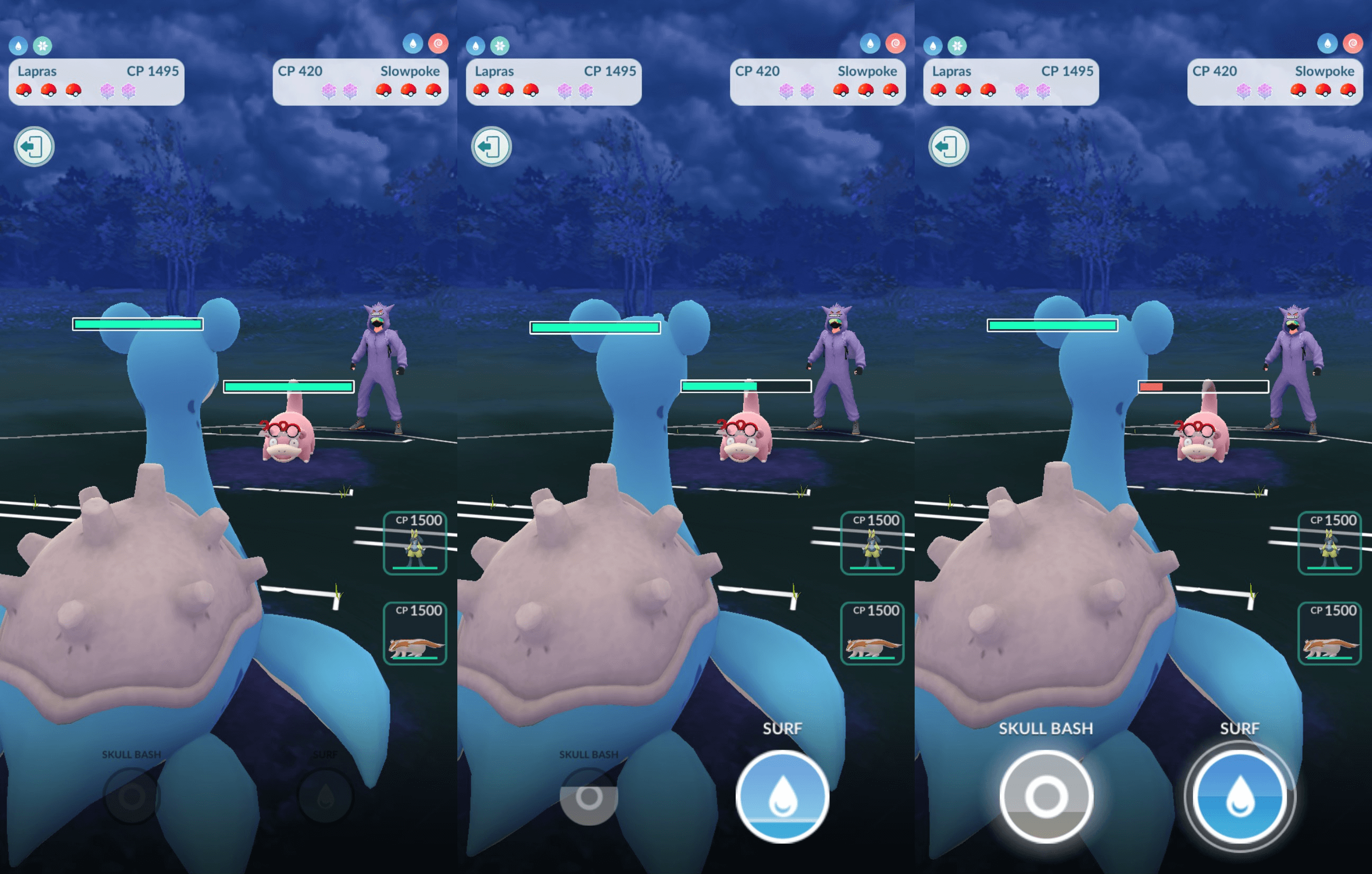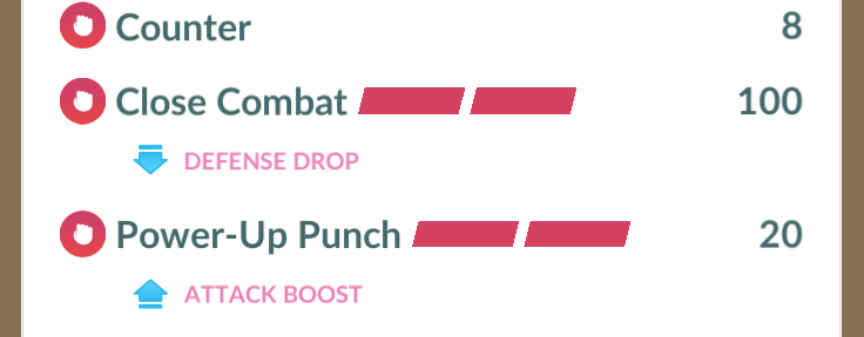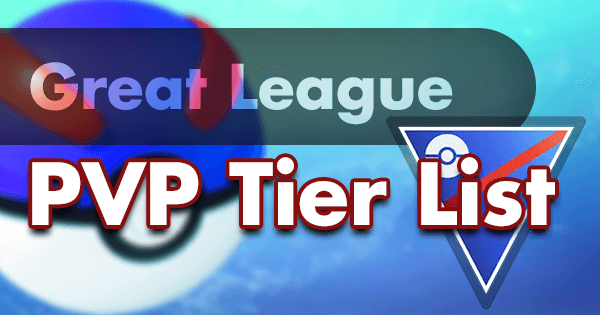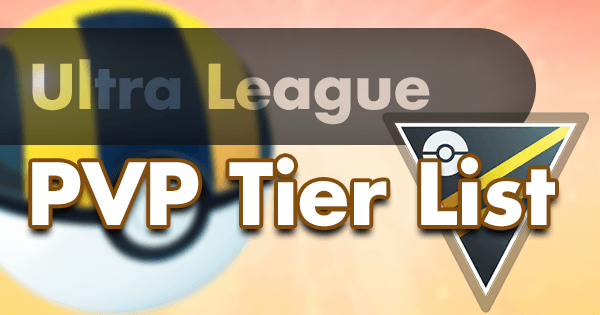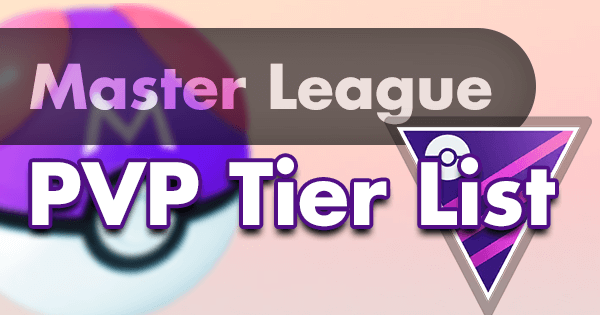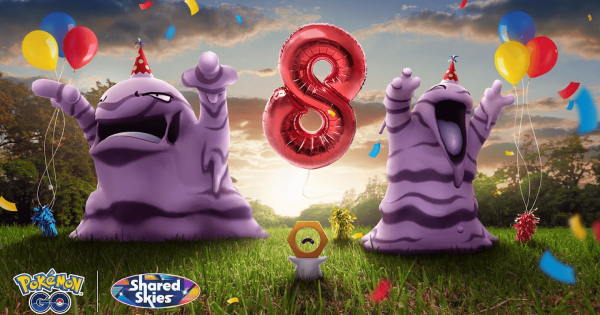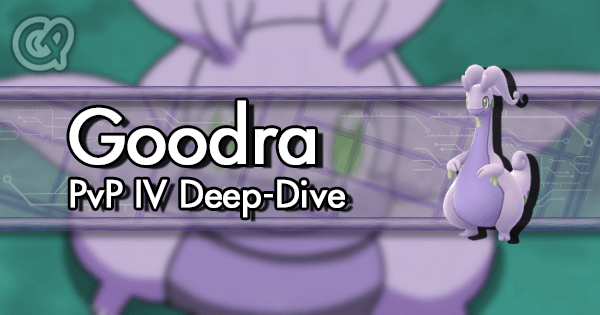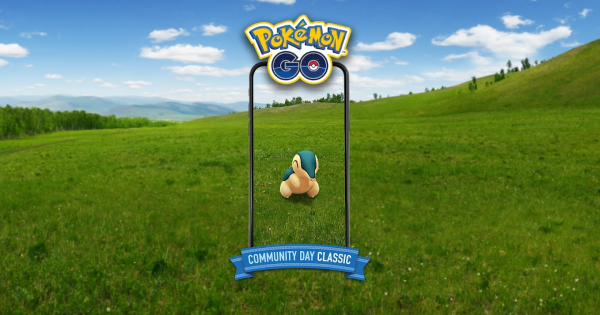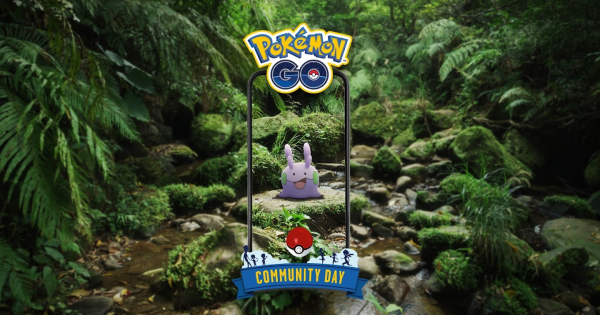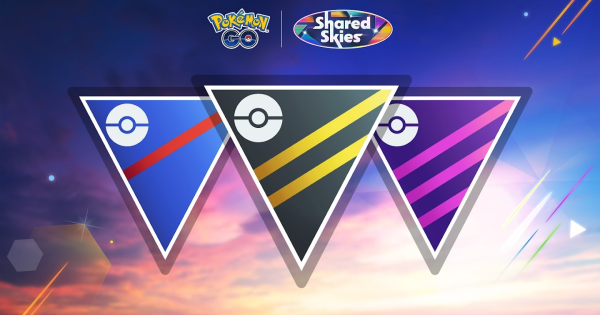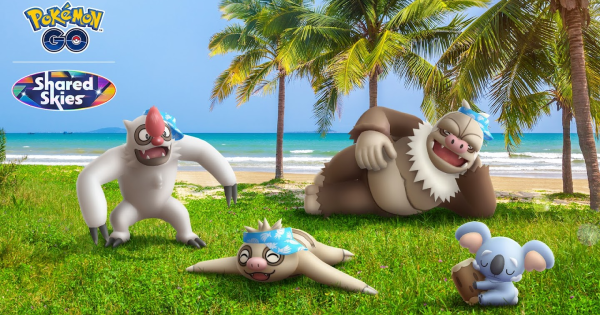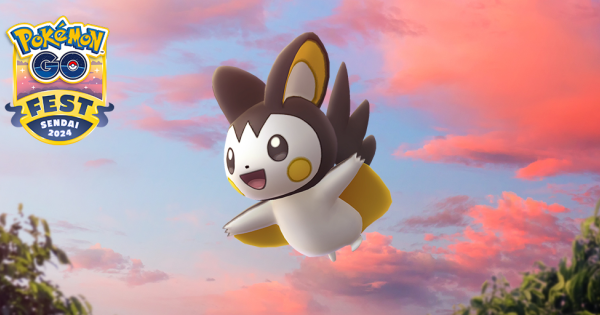Introduction
Welcome to PvP! Whether you’ve been playing Pokémon GO for a while, or you’re brand new, you’re gonna have a lot to learn to hit Legend, but this should be a really good place to start. And hey, just know: the fact that you’re here, reading this, gives you a leg up over so many players. The first step to improving is wanting to improve, so give yourself credit for seeking out resources!
Terminology
DPT: Damage Per Turn. Basically, how quickly a fast move deals damage.
EPT: Energy Per Turn. How quickly a fast move generates energy.
SE: Super Effective. It’s a 1.6x damage multiplier if the move you use has an advantageous typing to the opposing Pokémon’s.
NVE: Not Very Effective. It’s a 0.625x damage multiplier if the move you use has a disadvantageous typing to the opposing Pokémon’s.
STAB: Same Type Attack Bonus. If a Pokémon uses a move that shares a type with it (e.g. a Water-type Pokémon using a Water-type move), that move will deal 1.2x the damage it normally would.
Breakpoint: An Attack stat at which your move (typically a fast move) will deal extra damage to its target.
Bulkpoint: A Defense stat at which your Pokémon takes less damage from your opponent’s move (typically a fast move).
Mechanics
Unlike raids and gyms, which more or less run in real time, PvP is divided into 0.5-second long “turns” upon which the game functions. Most game actions take up at least one turn, with fast moves ranging in duration from 1 turn (moves like Lick and Dragon Breath) all the way up to 5 turns with Incinerate. These more or less allow the game to sync up the game between players. Don’t think too much about the specifics, but it’s important to know what people mean when referring to turns.
When you switch a Pokémon out, it starts a timer for 60 seconds. You can watch the timer count down by looking at the Pokémon you have remaining. This timer will continue to count down during the charged move minigame and during the post-faint switch timer. Keep track of it!
Lapras with 75 and 40 Energy moves at 0, 50, and 100 Energy. Note the little extra aura around the moves in the third image, showing that it’s capped on energy!
Each Pokémon can hold up to 100 energy. You can keep track by watching the Charged Move button fill up, multiple times. It can help to know the exact costs of your charged moves, too! Energy does remain with a Pokémon, so if you switch it out and then bring it back in later, it’ll have the same amount of energy it left with. Use this to catch your opponent off-guard!
When you activate a charged move, you’ll enter a minigame in which a number of "bubbles" appear on the screen, and you have to swipe on as many of them as you can in order to maximize your damage output. The specific pattern in which these bubbles appear is determined by which Type the move is. That is to say, a Normal move has a different minigame than a Dark move, and so on.
Based on the number of bubbles you hit, you get a rating of “Nice,” “Great,” or “Excellent.” Excellent deals maximum damage, and if you don’t hit any bubbles you deal about 25% of that. With a little bit of practice, you should be able to hit Excellents on all of them! Flying and Fighting can be especially difficult, so don’t get discouraged if you’re not getting everything all the time. Rather than being precise, try doing little circles with your finger around the area where the bubbles are showing up.
For Flying in particular, don’t try to tap! Do rapid ovals in the upper right corner of the screen, and see what works. Practice against the Team Leaders if you need to!
At the beginning of each match, each player starts with 2 shields. Each shield will block all but 1 damage from a charged move. This is one of your most important resources, and your shield usage can absolutely win or lose you a game! Be careful about using them on just anything! Don’t just use them on the first two moves that come out.
Moves
Fast moves have three primary stats: Damage, Energy, and Duration. Damage and Energy are obvious: How much damage does a move deal, and how much energy does it generate. Duration refers to how many turns a move takes to complete. As mentioned above, moves range in duration from 1 turn (Lick, Dragon Breath, Lock On) to 5 turns (Incinerate). Damage Per Turn and Energy Per turn are calculated via Damage÷Duration and Energy÷Duration respectively. In general, when trying to analyze a move, you can disregard the duration, and just look at DPT and EPT.
Some moves are super polarized in their stats. Razor Leaf and Charm have massive damage outputs, but as a tradeoff, have a terrible 2 EPT. Psycho Cut, Mud Shot, and Poison Sting all have 1.5 DPT (almost negligible) but 4.5 EPT, which is super high! Other moves, like Shadow Claw and Volt Switch basically have it all, with a super solid 3 DPT and 4 EPT. Note that neither state of polarization is bad. As long as your fast move is good at something, it’s okay if it gives up on something else.
Charged moves have 2 main stats: Damage and Energy Cost. Both of these stats are pretty self-explanatory. One thing to take note of, though: unlike in raids, where moves are One Bar, Two Bar, or Three Bar, there’s a lot more variety in how much charged moves cost in PvP. In fact, the game kinda lies to you in how it displays moves. In the PvP tab, moves are either displayed as 1 Bar or 2 Bar, but that’s only because it rounds up to the next 50. In reality, moves range in cost from 35 Energy to 100 Energy, with many, many stops in between.
Flame Charge costs 50 Energy, and Brave Bird costs 55 Energy, but the way they’re displayed makes Brave Bird look MUCH more expensive.
Typically, the best initial metric for charged move analysis is its DPE, or Damage Per Energy. The more damage you’re getting for the energy you spend, the happier you are! On the whole, too, the cheaper a move is, the better it is. That’s because of how moves interact with shields. If your opponent shields a 35 Energy move, then they’re down a shield and you’re down 35 Energy. If your opponent shields an 80 Energy move, though, then now you’re down way more energy for the same resource. To be clear, this isn’t to say that expensive moves are bad! They’re just also riskier.
Some charged moves do more than just deal damage! These come in two main categories: Buffs (moves that increase stats) and Debuffs (moves that decrease stats). Notably, stat-changing moves have their effects even if the move is shielded. This is true for moves that raise stats (like Power-Up Punch and Flame Charge), and moves that reduce stats (Close Combat and Icy Wind).
These stat changes work as follows:
| -4 | -3 | -2 | -1 | 0 | +1 | +2 | +3 | +4 |
|---|---|---|---|---|---|---|---|---|
| 50% | 57.15% | 66.67% | 80% | 100% | 125% | 150% | 175% | 200% |
You start out at buff level "0." As you gain buffs and debuffs, you shift along this line, going to a maximum of -4 to +4. For example, if you use Power-Up Punch and gain +1 Attack, you now have a 1.25x multiplier to your Attack stat. If you then get hit by two Icy Wind (which each apply a -1 Attack debuff), you’re now at -1.
Worth noting, the move page doesn’t specify exactly how many stages each Boost or Drop is! These look the same, despite the fact that Power-Up Punch increases your attack by 1 Stage, and Close Combat lowers your defense by 2 Stages.
Strategy
Alright, cool! You’ve got some idea of how the game works. But how do you play?
Shields are one of the most important resources you have, and you’ve gotta use ‘em right. At the start of the game, you and your opponent each have 2 shields. Knowing when exactly to shield is incredibly difficult, though, and there are no hard and fast rules. That said, here are some tips
1. Don't just shield the first two moves
This is a trap a lot of newer players fall into, and it’s almost always a mistake. Once you’re out of shields, you lose a lot of control over how the game plays out, and that means it’s often worth letting moves hit you initially rather than going full shields-down. This doesn’t mean never shield them, just don’t always do it. Similarly,
2. Try to avoid going 0-2 on shields.
Having no shields is bad. Having no shields while your opponent still has both of theirs is very often game-losing. If you spend both of your shields and you aren’t almost positive that you can take at least one shield of theirs very quickly, it’s often best to just take the move.
Frankly, in the end, the best teacher is experience. Over time, you’ll get a sense of when you need to shield and when you can get away with not. You’ll screw it up a lot, and that’s okay. Experienced players screw it up a lot too.
Shield baiting is a very fundamental skill for PvP. Here’s how it works. Let’s say you’re using Galarian Stunfisk, running Mud Shot + Rock Slide and Earthquake. Rock Slide costs 45 energy, and Earthquake costs 65 energy. You’re facing another Galarian Stunfisk, and you both have Shields. Rock Slide is resisted (double resisted, in fact!), and Earthquake is Super Effective. You want to land your Earthquake, so what do you do?
If you fire off an Earthquake, and they shield, then you’re down 65 energy. However, if you charge up enough energy for an Earthquake, then throw a Rock Slide (and they shield), you’re only down 45 energy instead. This lets you get to your next Earthquake much faster, and can be super important to win certain matchups.
In short, baiting has three main steps: 1) Charge up enough energy for the scary move. 2) Throw the cheaper move. 3) Pray that they shield it.
That said, it’s obviously risky. Maybe you go for the Rock Slide and they don’t shield, and you’ve basically wasted 45 energy for nothing. Sometimes you go for the Earthquake, and they don’t shield. The answer to “When do I bait, and when do I just go straight for the move I want” is “You gotta feel it out, and sometimes just hope for the best.” It’s nebulous, and you are putting control of the game into your opponent’s hands. Similarly, though, it’s important to know that this is a tactic your opponent might be employing! In general, it’s often worth not trying to call a bait, and just shielding anyway. I know this sounds like “Hey try not to shield” being placed right next to “Just shield,” and honestly it kinda is. It’s going to come down to experience. And again: it’s going to go wrong a lot. Failing to call a bait is not a personal failing, it’s just something that happens.
If you’re trying to win games, it’s important to identify winning and losing matchups. Some of them are obvious. Altaria has a brutal double resistance against all of Meganium’s moves, making that a super easy win. Others are a little more nuanced. Fire Spin Alolan Marowak can beat Galarian Stunfisk by shielding twice, but generally loses otherwise. While you won’t always know exactly how a matchup plays out, it’s worth trying to have a sense. One more simple way to do this is to learn type advantages. You don’t need to know all 9 shield scenarios to know that Togekiss is going to do really well against Dragonite, because you know Dragon moves will deal nothing to a Fairy-type (which is dealing super effective damage in return). Swampert vs Azumarill is another nuanced one. Swampert can win if it lands Sludge Wave, otherwise it generally loses. In general, you’ll feel these out over time with experience. It’s important to get a sense of when you’re in an advantageous matchup, or a disadvantageous matchup, or even a neutral one, so that you know how to play out the rest of the game!
One common trap new players fall into is, when they lose lead (that is to say, your first Pokémon has a generally losing matchup against their first Pokémon), they immediately go into their hardest answer.
As an example, if you’re running Obstagoon and Galarian Stunfisk, and your opponent leads with a Charm-user (say, Togekiss). You’ve lost lead pretty horribly (Obstagoon really hates Charm), and Galarian Stunfisk does really well against Togekiss. You might be tempted to just go straight into your answer, but Do Not. If you go into your hard counter, then they can just swap their mon out! The better strategy is to go out into what’s called a Safe Swap. While exactly what that looks like will depend on the team, in general a safe swap is a Pokémon that’s likely to have some level of play against a variety of Pokémon. Vigoroth is a classic one. With Counter + Body Slam, it can apply a lot of pressure to virtually everything that tries to come in on it. It can sometimes even beat the Pokémon your opponent brought back in, letting you make sure that your lead (that you lost) doesn’t end up back against the first Pokémon in the first place! Again, there’s a lot of nuance here, but the key point is this: Know what you’re switching into if you lose lead, and don’t instantly go into your hard counter.
Where Do I Start?
So you know how the game works, and some of the basics of how to play it. But you can’t battle without Pokémon. Here are a few really important things to know.
This might seem obvious, but it’s a little harder than it initially comes across. There are a lot of Pokémon that you see all the time in raids that are fantastic there, but are very much not in PvP. Frankly, there are just a lot of Pokémon in general that aren’t very good. When in doubt, you can check GamePress’s format tier lists.
PvPoke’s format rankings are also a good choice to get a sense of what’s strong. Basically, though, if something’s ranked below a 3.5/5 on our tier lists, you need a real justification to bring it out on your team.
Even if you’re using the right Pokémon, the wrong moveset can completely ruin its performance. Steel Wing Skarmory and Rock Smash Azumarill are early-season memes, where someone’s clearly moving in the right direction with their team, but they lost it somewhere. While there are some Pokémon with multiple viable movesets (Alolan Ninetales does just fine with both Charm and Powder Snow, for example), the majority of Pokémon have a Correct moveset. If you check our Pokémon pages, we have moveset ratings for anything you might want to use! Just make sure that you didn’t invest all that dust into a Pokémon, only to have it running way below where it could be because you’re not on the right moveset. Similarly: make sure you’ve unlocked a second charged move on the Pokémon you’re using! It’s really that important, and it’s really that worth it. This is another reason it’s important to use good Pokémon: you don’t want to spend 75,000 Dust to 3move a Kabutops only to realize that the mon kinda sucks.
This is both the most difficult and most simple out of all of these. Team building is hard. Very hard. It requires pretty significant knowledge of Pokémon, formats, and that nebulous skill that’s just team building in and of itself. Just keep in mind that there’s nothing wrong with just using a team you found online.
Many PoGo YouTube content creators put out great teams too! CalebPeng, Wallower, and FPSticks are all fantastic, with consistently educational content and pretty minimal meme teams. If you’re looking for something more data-driven, look at @ytxpikachu and @gobattlelog on Twitter! PvPoke's "Top Performers" page can also provide a number of strong teams!
When you’re new, don’t try to build your own teams. A lot of experienced players don’t build their own teams. Just find something that’s proven to be good, and use that.
PvP IVs
PvP IVs aren't intuitive. They don't follow the same pattern as Raid IVs, and in most cases, you're not looking to use the hundo.
In general, you're looking for low Attack, paired with high Defense and HP (e.g. 0/15/15-ish). This is due to a quirk in the CP calculation formula.
You'll notice that Defense and Stamina are square rooted, whereas Attack isn't. This means that Attack increases your CP more than the other two stats. In CP-capped leagues (Little, Great, and Ultra), your goal is to cram as many stats into your mon as possible. You'll see this as a metric called Stat Product, which is Attack*Defense*HP. The higher your stat product, the bulkier your mon, and (with some breakpoint/bulkpoint-related exceptions), your goal is just to maximize that stat product. Basically, a high Attack will lower your Stat Product more than a high Defense/HP, and leave you with a lower-performing mon overall
When in doubt, though, just use a rank checker tool! “Rank” is just how good a Pokémon’s stat product is compared to all others, so for example a “Rank 1” has the best possible, and “Rank 4096” is the worst you can get. Apps like Poke Genie or Calcy IV have a rank checking function built in. Alternatively, check out GoStadium’s Rank Checker tool!
How Much do PvP IVs Matter?
Short answer: more than you’d like, and also less than you’d expect. The IVs of the Pokémon you’re using don’t matter...until they do. In so many matchups, you can give up IVs without losing anything. A 14/14/14 Melmetal will perform almost identically to the 15/15/15 in Master League. On the other hand, sometimes it matters a lot. The difference between a Dialga with 15 Attack and a Dialga with 14 Attack is massive. Realistically, though, if you don’t want to open PvPoke matrix sims and check everything you’re considering using (worth learning how to do eventually, but definitely not now), just consider PvP rank for Great and Ultra League, and...don’t make any huge investments for Master without running it by a more experienced friend. Personally, I consider anything ranked in the Top 100 great, and anything Top 500 perfectly usable. Just don’t use anything, like, 15/0/0 if you can avoid it. If you need to make a mon, make the mon. “I can’t make anything until I get a rank 1” is an unproductive and self-sabotaging attitude.
Other Important Things to Know
Type Advantages
It feels weird to just list type advantages just under “Other Things.” This is because, realistically, knowing how different types interact is one of the absolute most fundamental things in the game. It’s so much harder to know when to shield, or when you’re in a positive/negative matchup, if you can’t make quick guesses based on type advantage. The reason this isn’t higher up isn’t because it’s not as important as the other things. It absolutely is. The issue is that there’s a lot to learn. 18 different types with unique interactions. Some Pokémon are dual-type, meaning you have to remember multiple interactions at once! The last thing I want to say is “Don’t try playing until you know all the type matchups.” Just make sure you’re paying attention to when the game says “Super Effective” or “Not Very Effective” as you play. Looking for type matchups online can really help too!
Common Movesets
It’s also important to try to get a sense of what moves Pokémon generally run. Galarian Stunfisk will always run Mud Shot, Rock Slide, and Earthquake. Azumarill will always run Bubble, but can then run Ice Beam, Play Rough, or Hydro Pump. Knowing what moves Pokémon have will let you get a better sense of how matchups will play out. Like with type matchups, you’re not expected to just look all of this up immediately. Just keep it in mind as you play, and try to remember what you run into!
There Is No Algorithm
Seriously. The game isn't out to get you. Depending on your team, sometimes you'll just lose leads. It happens, and there's no conspiracy to screw some players over. If you find that you're constantly losing lead, maybe your team needs a shake-up. At the same time, know that losing lead is absolutely not a death sentence, and you can absolutely turn a lost lead into a won game with skillful play! Also, as another point: if the ELO system is functioning as intended (and it feels like the one part of the game that actually does), it will eventually draw you to about a 50% winrate. If you find a rating that you’re getting stuck at long-term, try to figure out why you’re losing. Always try to reach out to PvP communities for help if you can! Everyone’s in this to get better, and you should be able to find people who can offer advice.
Practice!
You are going to lose a lot of games. A lot of those losses are going to feel stupid. And you know what? That’s okay. You’re new. You’re learning. And the fact that you’re trying, and that you read an entire article on how to get better, is super respectable. Don’t feel bad about losing. Every game you play, just try to think: “Why did I lose? What could I have done differently?” and learn from that.
A Note On Fast Move Counting
A valuable technique that a lot of experienced players employ is Fast Move Counting. Basically, if you know how many fast moves it takes for a Pokémon to reach a charged move, you’ll have a better sense of what move your opponent might be throwing. Swampert can’t reach a Sludge Wave in only 5 Mud Shots: you know that’s Hydro Cannon. If you’re interested in learning counts, 7even provides great infographics on Twitter. Alternatively, if you learn how much energy a fast move generates, and how much energy a charged move costs, you can calculate the counts yourself on the fly. Some advanced players forego counting entirely, instead relying on experience and intuition to figure out how much energy an opponent has. I in no way want to downplay the value of this technique. It’s incredibly useful, and if you can do it without it getting in the way of you actually playing, it’s absolutely worth doing.
However, when you’re just getting started, trying to count and trying to think at the same time can be overwhelming. Trying to figure out your gameplan, while remembering typings, and what moves a mon has, and how a matchup plays out, and remembering a full team, and counting can be too much. If you find yourself in that position, then let the counting go until you’re more comfortable just playing. Add it back into your roster of techniques when you can do it without sacrificing too much!
Resources
Don’t try to go this alone. GamePress, of course, is a fantastic resource. Pokémon ratings, tier lists, articles, etc, are all really good tools. PvPoke is the best resource out there for running matchup simulations. GoStadium and The Silph Arena both have really good resources as well! It can also be helpful to just watch people playing on twitch, or on youtube. You can pick up a lot of tips and strategies!

